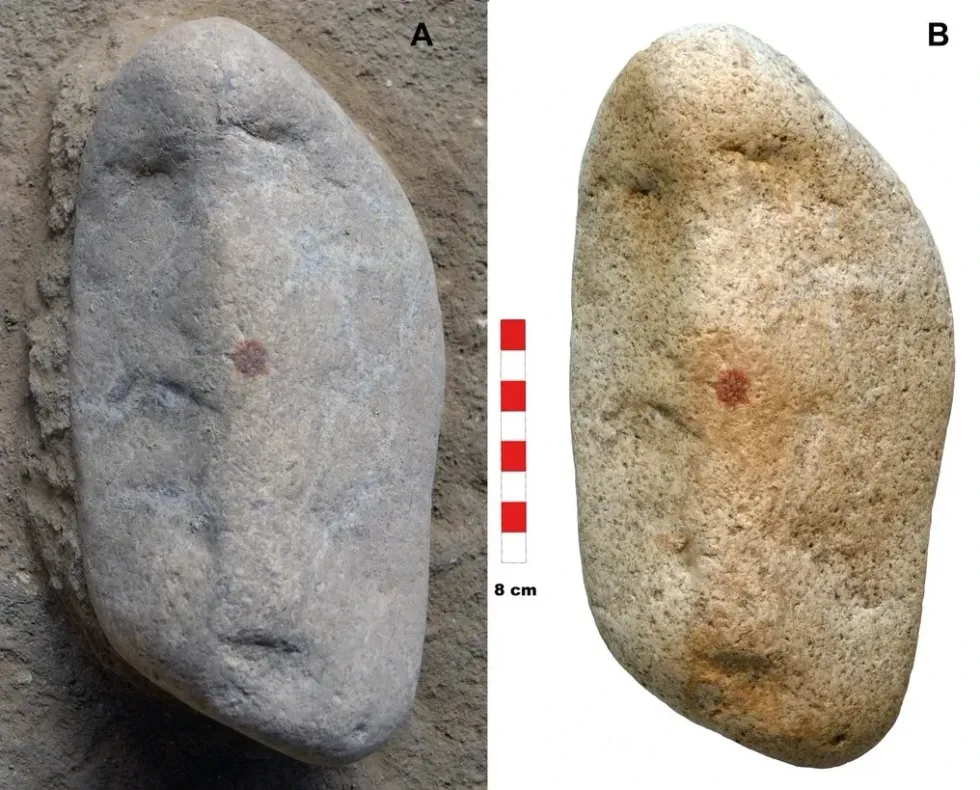Archaeology breakthrough as world's oldest human fingerprint discovered

Neanderthals went extinct around 40,000-years-ago but occupied Europe for hundreds of thousands of years
Don't Miss
Most Read
A red dot on a face-shaped rock in Spain may be setting records in more ways than one.
At roughly 43,000-years-old, the dot may be the oldest human fingerprint on record and also one of the earliest symbolic objects ever found in Europe.
The fingerprint, made with the red mineral ocher, was left by a Neanderthal, the closest extinct relative of modern humans.
Neanderthals went extinct around 40,000-years-ago but occupied Europe for hundreds of thousands of years before early modern humans arrived on the continent.

Microscopic examinations of the red dot revealed the whorls of the Neanderthal fingerprint
|ALVAREZ-ALONSO ET AL
The researchers behind a new study argue that the red dot represents a nose on a rock with face-like features.
The rock, which resembles a large potato, is about 6 inches long and has vaguely eyebrow-shaped indentations near one end.
The deliberate addition of a red dot for a "nose" beneath the "eyebrows" of the rocky "Mr Potato Head" transforms the large pebble into a primitive portrayal of a human face, the authors argue.
The discovery is a further challenge to the idea that Neanderthals were generally not capable of symbolic art.
LATEST DEVELOPMENTS:
The rock was excavated from the San Lázaro rock shelter near Segovia in Spain
|ALVAREZ-ALONSO ET AL
The red dot looks evenly spread but forensic examinations and analysis of how it reflected different wavelengths of light revealed it was created by a fingerprint with a distinctive whorl pattern, probably from an adult male Neanderthal.
The granite pebble seems to have been deliberately brought to the rock shelter, probably from a nearby river where it formed.
The study, published May 5 in the journal Archaeological and Anthropological Sciences, describes the 2022 discovery at the San Lázaro rock shelter on the outskirts of Segovia in central Spain.
Scientists have evidence that the region was heavily populated by Neanderthals between 44,000 and 41,000 years ago, but there is no evidence that early modern humans ever lived there.
"This find represents the most complete and oldest evidence of a human fingerprint in the world, unequivocally attributed to Neanderthals, highlighting the deliberate use of the pigment for symbolic purposes," Spain's National Research Council (CSIC) said in a translated statement.

An image of the red dot on the rock
|ALVAREZ-ALONSO ET AL
But some experts are not convinced that the dot is symbolic.
Anthropologist and archaeologist Bruce Hardy of Kenyon College in Ohio said: "Clearly, the ocher has been intentionally applied with the fingerprint. But I did not see a face symbolism is in the eye of the beholder."
Rebecca Wragg Sykes, a paleolithic archaeologist at the universities of Cambridge and Liverpool, thinks that even if the red dot is symbolic, the study's authors may have misunderstood its meaning.
"What the team infer to be a representation of a nose on a face might, if turned the other way up, be seen as a navel on a human figure," she told Live Science.
Durham University archaeologist Paul Pettitt also said that the rock was an "unequivocal example of the Neanderthal use of red pigment" but whether the red dot was truly symbolic remained unclear.











